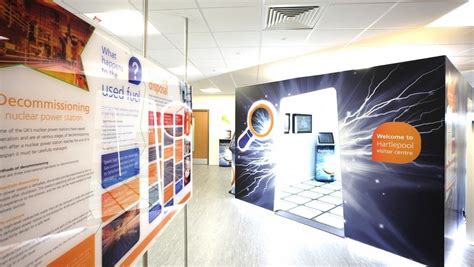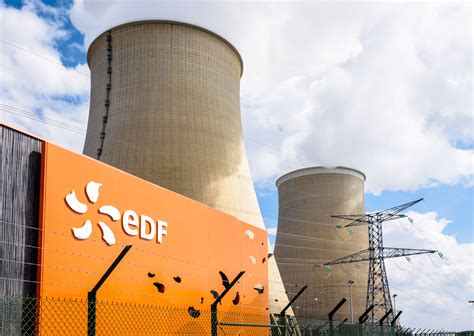EDF Energy is one of the largest energy companies in the UK, operating a diverse range of power stations that generate electricity for millions of homes and businesses. With a strong focus on reducing carbon emissions and promoting sustainable energy, EDF Energy has invested heavily in its power generation fleet, which includes a mix of nuclear, gas, and renewable energy sources. In this article, we will explore five of EDF Energy's key power stations, highlighting their capacity, fuel sources, and contributions to the UK's energy landscape.
Introduction to EDF Energy’s Power Stations

EDF Energy’s power stations are located throughout the UK, with a total generating capacity of over 13,000 megawatts (MW). The company’s fleet includes eight nuclear power stations, which provide around 20% of the UK’s electricity, as well as a number of gas-fired and renewable energy power stations. EDF Energy’s power stations are designed to be highly efficient and flexible, allowing them to respond quickly to changes in electricity demand and help to balance the grid.
Key Points
- EDF Energy operates a diverse range of power stations, including nuclear, gas, and renewable energy sources.
- The company's power stations have a total generating capacity of over 13,000 MW.
- EDF Energy's nuclear power stations provide around 20% of the UK's electricity.
- The company is committed to reducing carbon emissions and promoting sustainable energy.
- EDF Energy's power stations are designed to be highly efficient and flexible, allowing them to respond quickly to changes in electricity demand.
1. Hinkley Point C Nuclear Power Station

Hinkley Point C is a new nuclear power station currently under construction in Somerset, UK. The station will have a generating capacity of 3,200 MW, making it one of the largest power stations in the UK. Hinkley Point C will be powered by two European Pressurized Reactors (EPRs), which are designed to be highly efficient and safe. The station is expected to begin generating electricity in the mid-2020s and will provide enough power for around 6 million homes.
Technical Specifications
Hinkley Point C’s technical specifications include:
- Generating capacity: 3,200 MW
- Fuel source: Nuclear (EPRs)
- Location: Somerset, UK
- Expected completion date: Mid-2020s
2. Sizewell B Nuclear Power Station
Sizewell B is a nuclear power station located in Suffolk, UK. The station has a generating capacity of 1,200 MW and is powered by a single pressurized water reactor (PWR). Sizewell B has been in operation since 1995 and provides enough electricity for around 2 million homes. The station is known for its high levels of efficiency and reliability, with a capacity factor of over 90%.
Operating Performance
Sizewell B’s operating performance is impressive, with:
- Capacity factor: Over 90%
- Availability factor: Over 85%
- Annual electricity generation: Around 9 billion kilowatt-hours (kWh)
3. West Burton Power Station
West Burton Power Station is a gas-fired power station located in Nottinghamshire, UK. The station has a generating capacity of 1,332 MW and is powered by three combined cycle gas turbines (CCGTs). West Burton is a highly efficient power station, with a thermal efficiency of over 58%. The station provides enough electricity for around 1.5 million homes and is an important part of the UK’s gas-fired power generation fleet.
Environmental Performance
West Burton’s environmental performance includes:
- Carbon dioxide (CO2) emissions: Around 1.5 million tonnes per year
- Nitrogen oxides (NOx) emissions: Around 1,500 tonnes per year
- Sulfur dioxide (SO2) emissions: Around 100 tonnes per year
4. Teesside Offshore Wind Farm

Teesside Offshore Wind Farm is a renewable energy power station located off the coast of Teesside, UK. The wind farm has a generating capacity of 62 MW and is powered by 27 wind turbines. Teesside Offshore Wind Farm provides enough electricity for around 40,000 homes and is an important part of the UK’s offshore wind energy sector.
Technical Specifications
Teesside Offshore Wind Farm’s technical specifications include:
- Generating capacity: 62 MW
- Fuel source: Wind
- Location: Offshore Teesside, UK
- Number of turbines: 27
5. Cottam Power Station
Cottam Power Station is a coal-fired power station located in Nottinghamshire, UK. The station has a generating capacity of 2,000 MW and is powered by four pulverized coal-fired boilers. Cottam is a highly efficient power station, with a thermal efficiency of over 39%. However, the station is scheduled to close in 2025 as part of the UK’s plans to phase out coal-fired power generation.
Operating Performance
Cottam’s operating performance includes:
- Capacity factor: Around 50%
- Availability factor: Around 80%
- Annual electricity generation: Around 10 billion kWh
| Power Station | Generating Capacity (MW) | Fuel Source |
|---|---|---|
| Hinkley Point C | 3,200 | Nuclear |
| Sizewell B | 1,200 | Nuclear |
| West Burton | 1,332 | Gas |
| Teesside Offshore Wind Farm | 62 | Wind |
| Cottam | 2,000 | Coal |

What is the total generating capacity of EDF Energy’s power stations?
+EDF Energy’s power stations have a total generating capacity of over 13,000 MW.
How much electricity does Sizewell B generate per year?
+Sizewell B generates around 9 billion kWh of electricity per year.
What is the expected completion date for Hinkley Point C?
+Hinkley Point C is expected to begin generating electricity in the mid-2020s.



